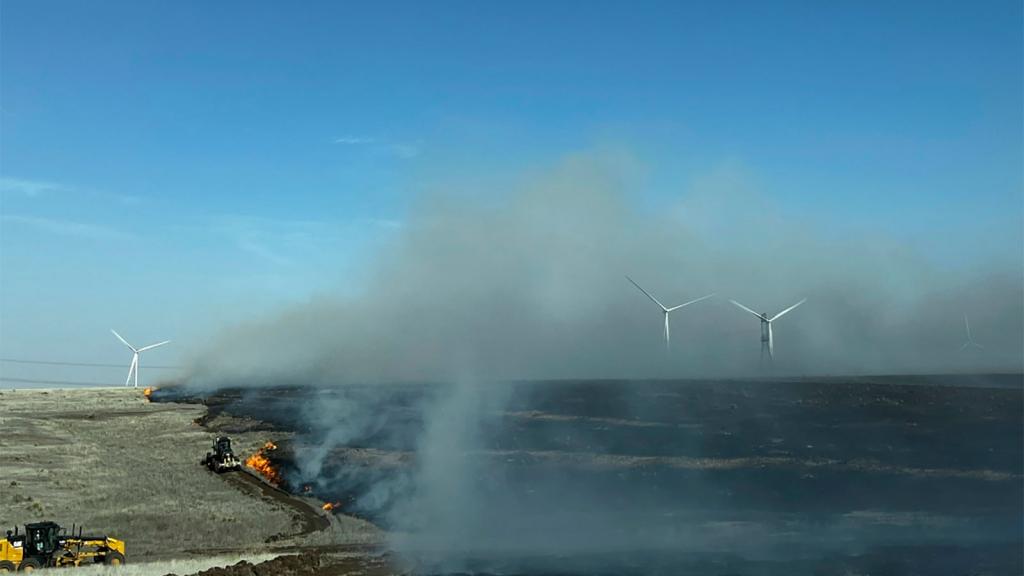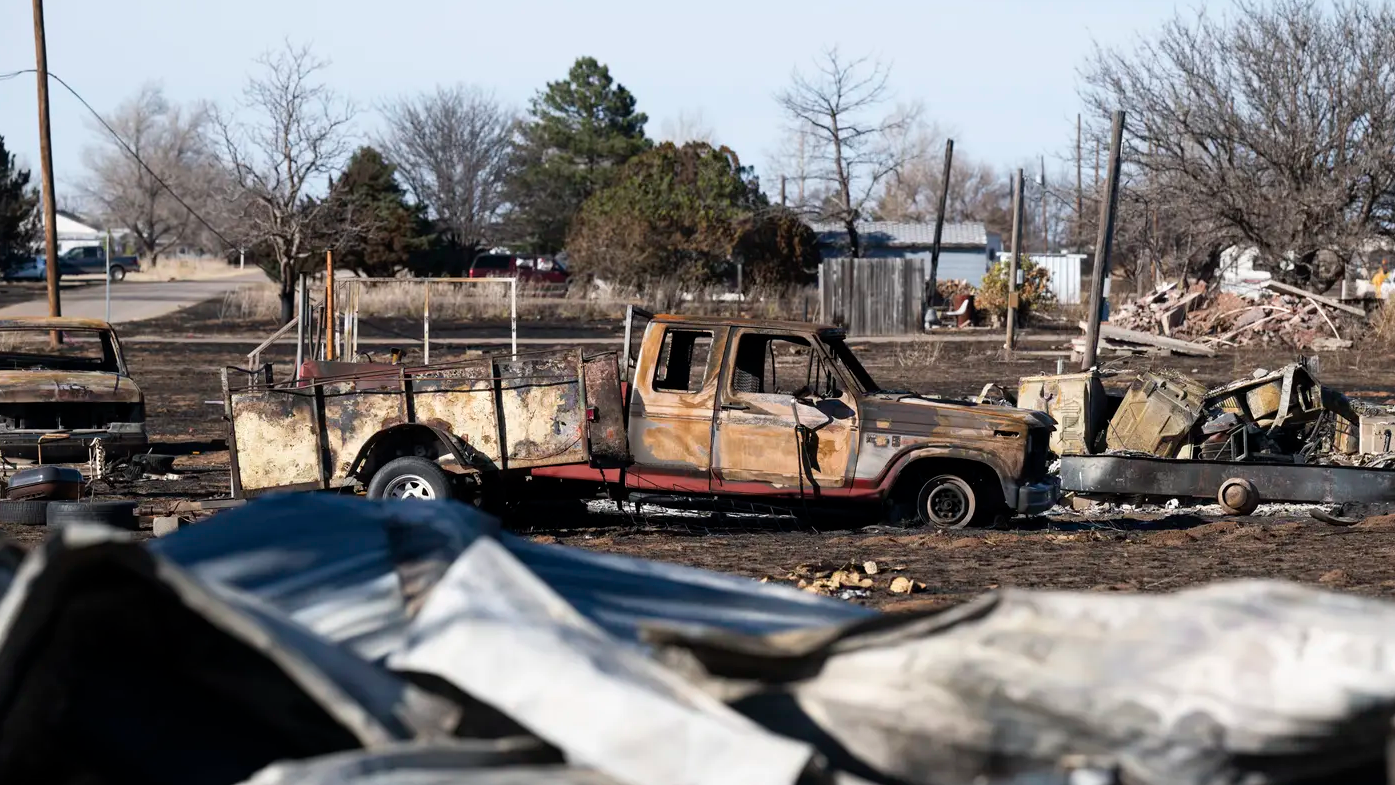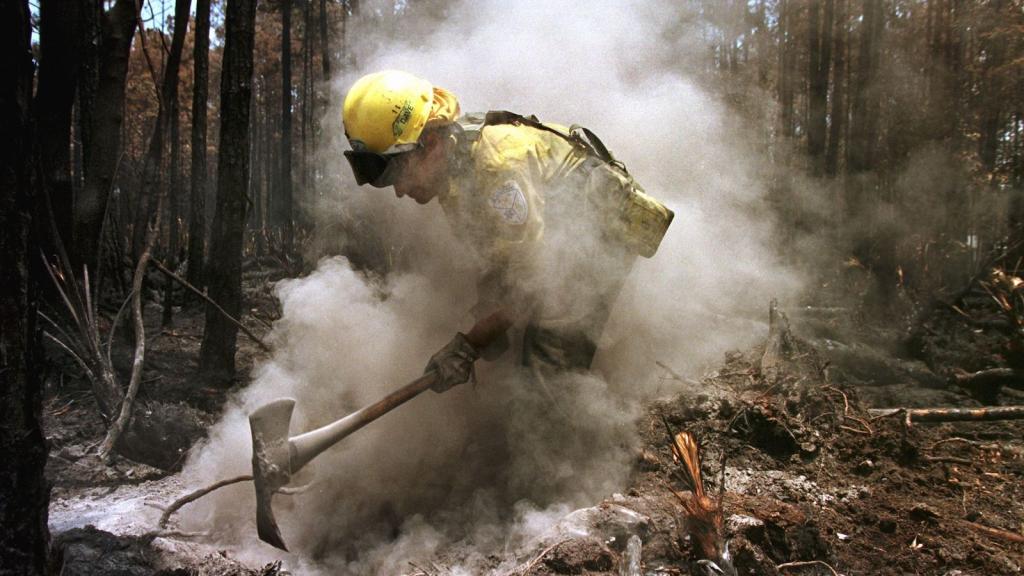This article originally appeared in The Texas Tribune, a member-supported, nonpartisan newsroom informing and engaging Texans on state politics and policy.
Many Panhandle residents whose dwellings and possessions burned in the region’s ongoing wildfires may never financially recover for one simple reason: Their homes weren’t insured.
“A lot of the people who have lost a home had no insurance,” Governor Greg Abbott said at a March 1 press conference. “So there are a lot of people in great need right now.”
Texans pay some of the highest homeowners insurance premiums in the country. Increased risk of extreme weather events, at least partially driven by climate change, have driven up those costs. Growth in homeowners insurance rates here outpaced the rest of the nation last year, straining Texans’ ability to pay.
In Texas, those without insurance are also more likely to be those who have a harder time recovering from disaster: lower-income households and rural residents. That means Texans without insurance face a steep — if not impossible — path to restore what financial well-being they had before a disaster strikes.
Patricia Hester, a 76-year-old Fritch resident, is among several Panhandle residents whose home was destroyed by a wildfire that swept through her neighborhood on the town’s south side on February 27. She dropped her homeowners insurance on her manufactured home about a decade ago because of rising costs.
“When you’re on a limited income, something has to give,” Hester said. “You have to eat and be able to get gas in the car. So that’s what I gave.”
It’s common for families, particularly those that are low-income, in areas destroyed by the Panhandle fires to not have homeowners insurance, local officials and community leaders said. Many simply can’t afford it and, because they own their homes outright, nothing requires them to carry it, they said.
Julie Winters, the executive director for Hutchinson County United Way, said about 70 families in Fritch whose homes had been damaged or destroyed asked the organization for assistance on March 1. Most of them didn’t have homeowners insurance, she said.
“This is a lower socioeconomic level of the community that got hit,” Winters said. “They probably cannot afford insurance.”
Texas homeowners who go without insurance tend to be lower-income, according to an analysis of U.S. Census Bureau data conducted by the Texas Real Estate Research Center at Texas A&M University. Homeowners in the state’s rural areas are more likely to not have insurance than their urban counterparts, the analysis found. Some 11 percent of homeowners in the state’s major metropolitan areas don’t have homeowners insurance, whereas about 26 percent of homeowners in rural areas lack it.
Further complicating matters: Several homes that burned down were manufactured homes, which homeowners can struggle to get insured. That’s because insurers consider them more risky investments since they are highly vulnerable to fires and other natural disasters, said Thomas Chandler, deputy director of the National Center for Disaster Preparedness at Columbia University.
And homeowners insurance is considered the most clear-cut avenue to seek financial restitution after a major disaster, experts told the Tribune. Going without it means homeowners would have to pay for repairs and rebuilding out of pocket — or rely on assistance from the public and private sectors that may not come.
Officials haven’t determined the full scope of the disaster as the fires continue to rage, though it’s believed hundreds of homes have been damaged or destroyed. The ultimate scale of the damage will determine whether displaced residents and others affected by the wildfires qualify for federal disaster aid under an emergency declaration.
Abbott said on March 1 he is waiting on a full assessment of the damages before requesting a declaration from the federal government.
Even if the assistance that can come with a federal disaster declaration arrives, it likely won’t fully replace what many homeowners in the Panhandle lost, Chandler said.
“It’s really more ‘get back on your feet’ money designed to enable you to just get started again,” Chandler said.
Stacy McFall, a 52-year-old certified nursing assistant who lives in Fritch, said she tried to obtain insurance to cover her childhood home, which she moved into about 14 years ago. But the home didn’t sit on a foundation, she said, so no insurer would write her a policy.
Flames engulfed McFall’s home on February 27. She had just enough time to pack her three dogs and a stack of clothes into her car before she evacuated, she said. McFall’s sister has taken her in for now, but McFall isn’t sure yet how she’ll bounce back.
“I don’t know what’s going to happen,” McFall said. “You feel kind of numb. You don’t know if you’re going to find a home. Everything is burnt to a crisp and I have to start all over again with everything.”
McFall’s son and daughter, who live in Dallas and Austin, respectively, have asked her to come live with them, she said, but she doesn’t want to move.
“This is my home,” McFall said.
Disclosure: Texas A&M University has been a financial supporter of The Texas Tribune, a nonprofit, nonpartisan news organization that is funded in part by donations from members, foundations and corporate sponsors. Financial supporters play no role in the Tribune’s journalism. Find a complete list of them here.



